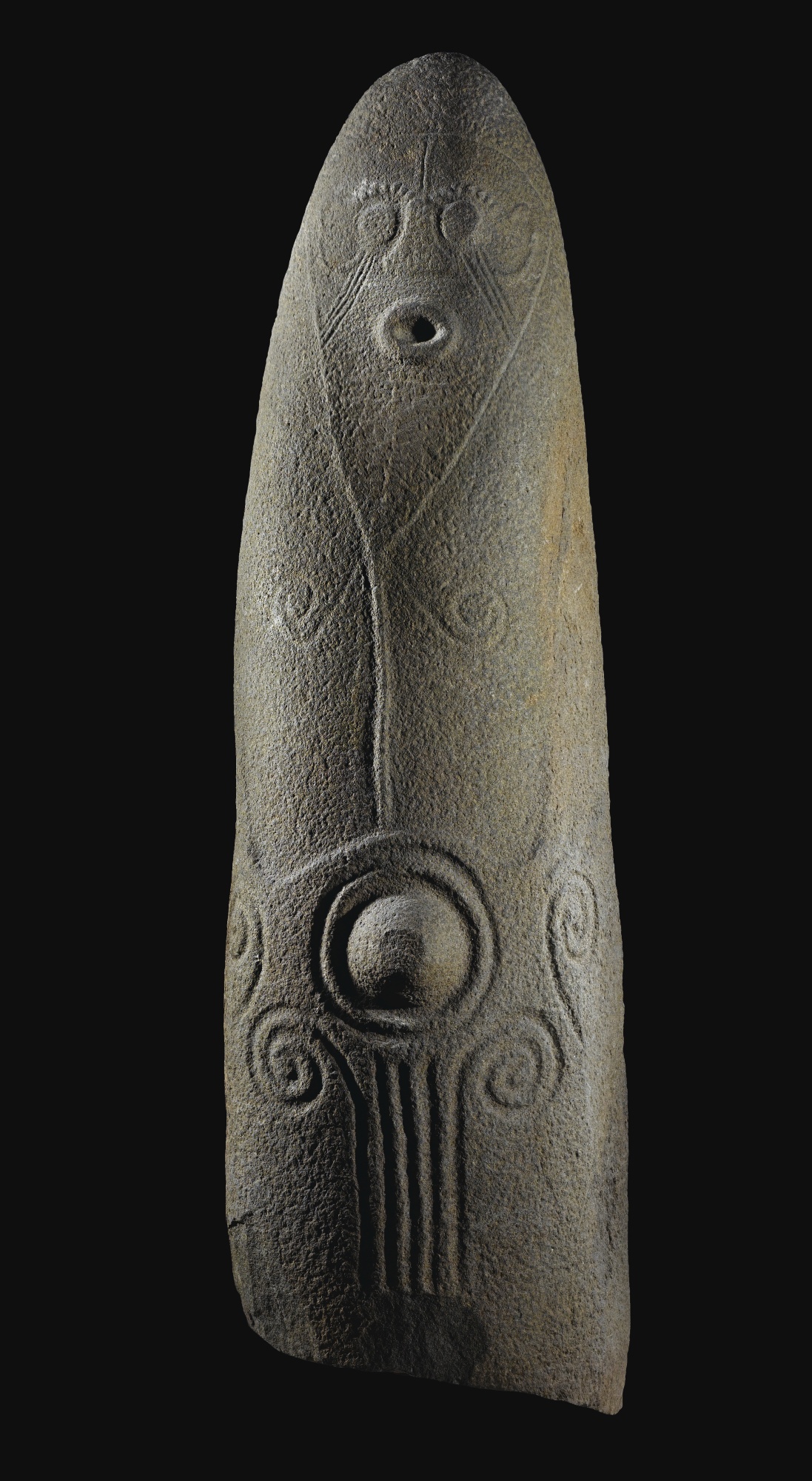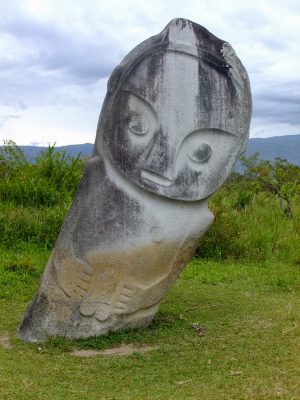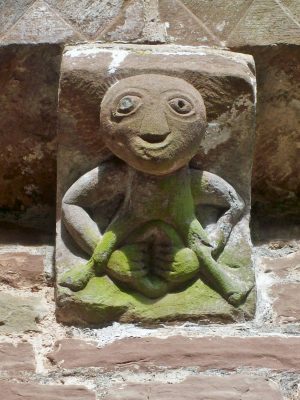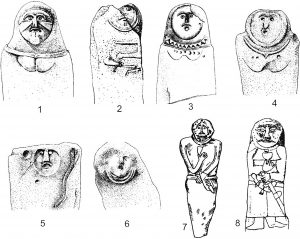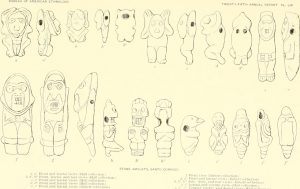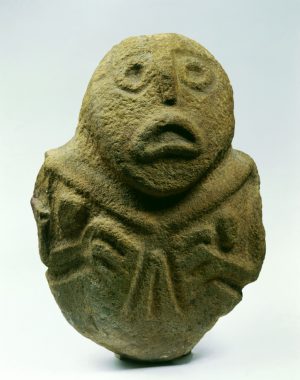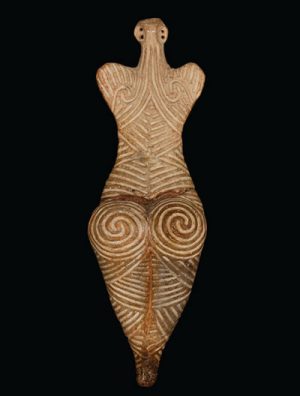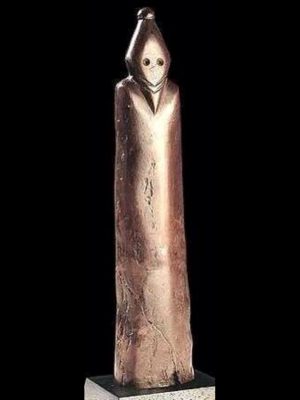Monolith (Atal), Ejagham-Bakor, Nigeria. Height 149 cm. Provenance: Collection Alain Javelaud, 1978. Via sothebys.com.
The description of the item at Sotheby’s reads:
In 1905, in his book entitled Cross River Natives, Charles Partridge mentioned for the first time the existence, in the region of the Middle Cross River, of striking figurative basalt stones (Partridge, 1905, p. 269-270), generally known nowadays as atal (“stone”) and dating back to before the 15thcentury (RMN, 2000, p. 138). This discovery was immediately compared by Hamilton (in Man, 1905, V, no. 23), to that of the kingdom of Benin and, in 1915, in Negerplastik, Carl Einstein published images of the only carved stone which had then reached Europe, the example acquired from Staschewski in 1909 by the Berlin Museum für Völkerkunde. This corpus of lithic art (which is very rare in Africa), was definitively established in 1968 by the British officer Philip Allison, who listed some three hundred monoliths, precisely distributed over twenty-nine sites in Bakor country (North Eastern Ejagham clan). Acquired in 1978, this monolith was published in the Arts of Nigeria in French Private collections ( Arts du Nigeria dans les collections privées françaises ,2012) and is the undoubted masterpiece of this style.
According to Allison, these ancestral monoliths were erected singly or in groups. In the latter case they were arranged in circles on reserved sites on the outskirts of villages where community activities were held. These phallic basalt rocks were originally found in the tributaries of the Cross River, where they had been polished by the current, and were then hoisted out of the water and carved by sculptors. According to Ekpo Eyo (in RMN, 2000, p. 140), “Each carved stone is supposed to represent an ancestor, a legendary or historic figure, or the emblem of a secret society.” Initiation ceremonies for each new age group took place within the circle of monoliths, thus conjuring the protection of the ancestors.
The exact origin of this monolith is not included in the work of Allison and therefore remains uncertain. However, the study of different styles of sculpture, which coincides with the geography of the Bakor clans, makes an attribution to the Nnams possible and more specifically – taking into account the flowing lines (no neck), the extension of the beard all the way down to the navel, the nodule eyebrows and the profusion of spiral patterns – to the Nkrigor Nselle sub-clan (Ikom District). See Allison (1968, n° 25-30) for stylistically comparable sculptures.
Although the pyriform beard, the prominence of the protruding navel and the wealth of body adornments (including identifying markings such as comma-shaped temporal keloids and scars stretching at an angle on the cheeks) are all typical features of the corpus, the striking beauty is what stands out most in the case of the offered lot. The force of the expression is echoed in the pared down beauty of the outlines, the exceptionally elaborate adornments and the rare smoothness of the outline, which all combine to achieve the highest level of accomplishment in the world of stone carving: a unique blend of strength and sensitivity.
Compare to other stone figures:

